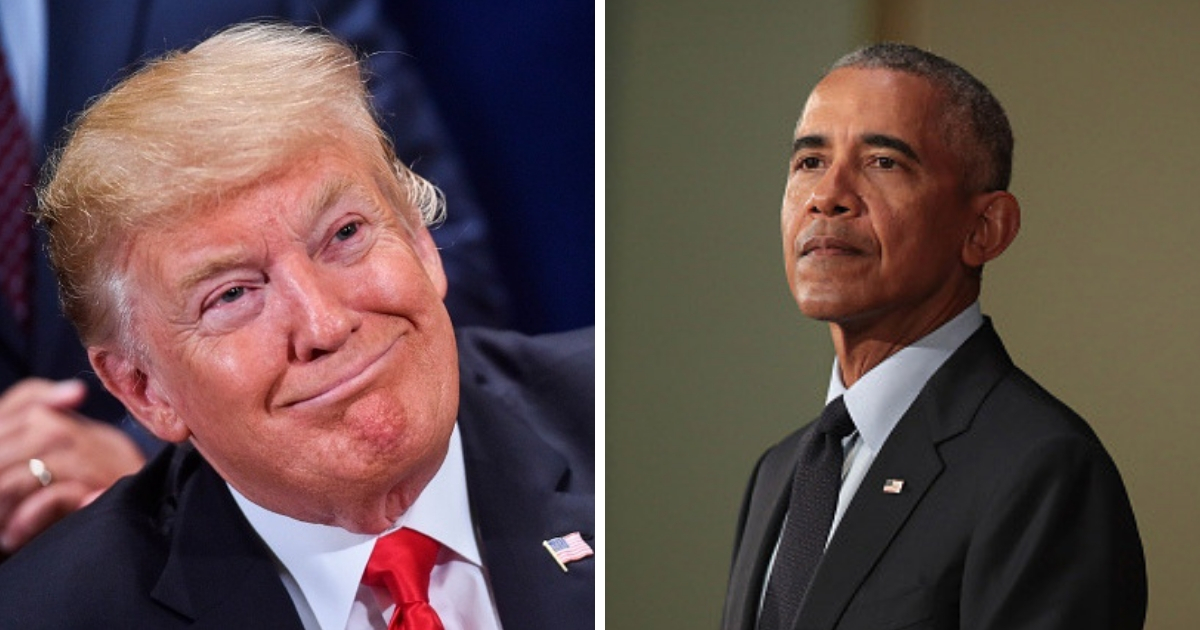
Winning: Trump's Approval Rating Surpasses Obama's at Same Point in Presidency
With roughly two weeks to go until the midterm elections, President Donald Trump is riding a wave of popularity, according to a new poll.
Trump now has 47 percent of those polled supporting him, while 49 percent do not approve of the job he has been doing, according to an NBC News-Wall Street Journal Poll, as reported by NBC.
The new figure is Trump’s peak in that poll.
A month ago, the same poll gave Trump a 44 percent approval rating.
The poll also noted that among Republicans, Trump has an 87 percent approval rating.
An October 2010 version of the NBC/Journal poll, representing roughly the same timespan in office, showed former President Barack Obama with a 45 percent approval rating.
*NEW:
Why Trump is now more popular than Obama.
(Clue: it has to do with delivering on promises & perpetual Trump-bashing outrage…)
My column: https://t.co/72NkbXM6H3 pic.twitter.com/hyCCUBvqos— Piers Morgan (@piersmorgan) October 22, 2018
Other polls have recorded a similar trend. Gallup shows Trump with a lower rating — 44 percent — but noted that his current popularity is five percentage points above the average for his presidency.
In trying to assess Trump’s standing, Investor’s Business Daily noted in an editorial that as of last week, Trump’s poll numbers were comparable to those of former Presidents Ronald Reagan and Bill Clinton. It further noted that some presidents with higher numbers at this point in their presidency, such as former Presidents George H.W. Bush and Jimmy Carter, failed to win re-election.
” … anyone who thinks Trump’s low approval ratings today are a problem for his re-election prospects is mistaken. There’s no correlation. Three presidents with ratings as low or lower than Trump’s served two terms. Two with much higher approval ratings at this point ended up as one-term losers,” IBD wrote.
The most recent NBC/WSJ poll showed that Democrats appear to hold a lead in the race for control of Congress, but Republicans are closing the gap.
“It’s a barnburner,” said Republican pollster Bill McInturff.
“The current data shows that the Democratic advantage has ebbed but still with a large advantage. And the GOP shows some life,” said Democratic pollster Fred Yang.
The national parties “are on two different tracks, moving in two different directions,” said Tom Davis, former chair of the National Republican Congressional Committee, according to The Atlantic, which noted that the GOP was gaining in rural regions while Democrats were growing stronger in suburban areas where they already did well.
Although congressional elections have traditionally been based on local issues, that’s become less so, said one expert.
“In the last few elections, we’ve moved more toward a parliamentary system where you are voting based on the leader and not necessarily on your local candidate,” said Glen Bolger, a GOP pollster.
Truth and Accuracy
We are committed to truth and accuracy in all of our journalism. Read our editorial standards.
Advertise with The Western Journal and reach millions of highly engaged readers, while supporting our work. Advertise Today.












